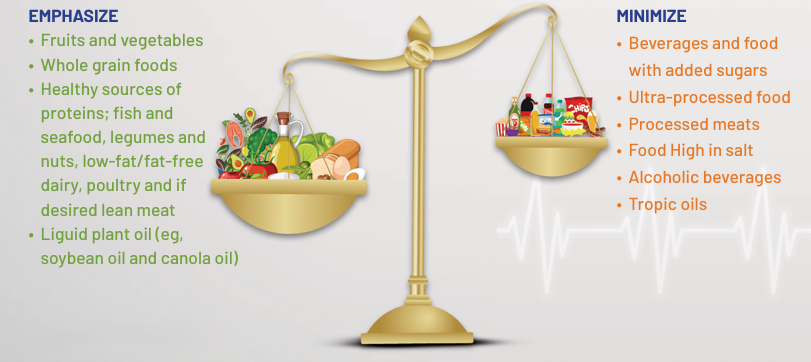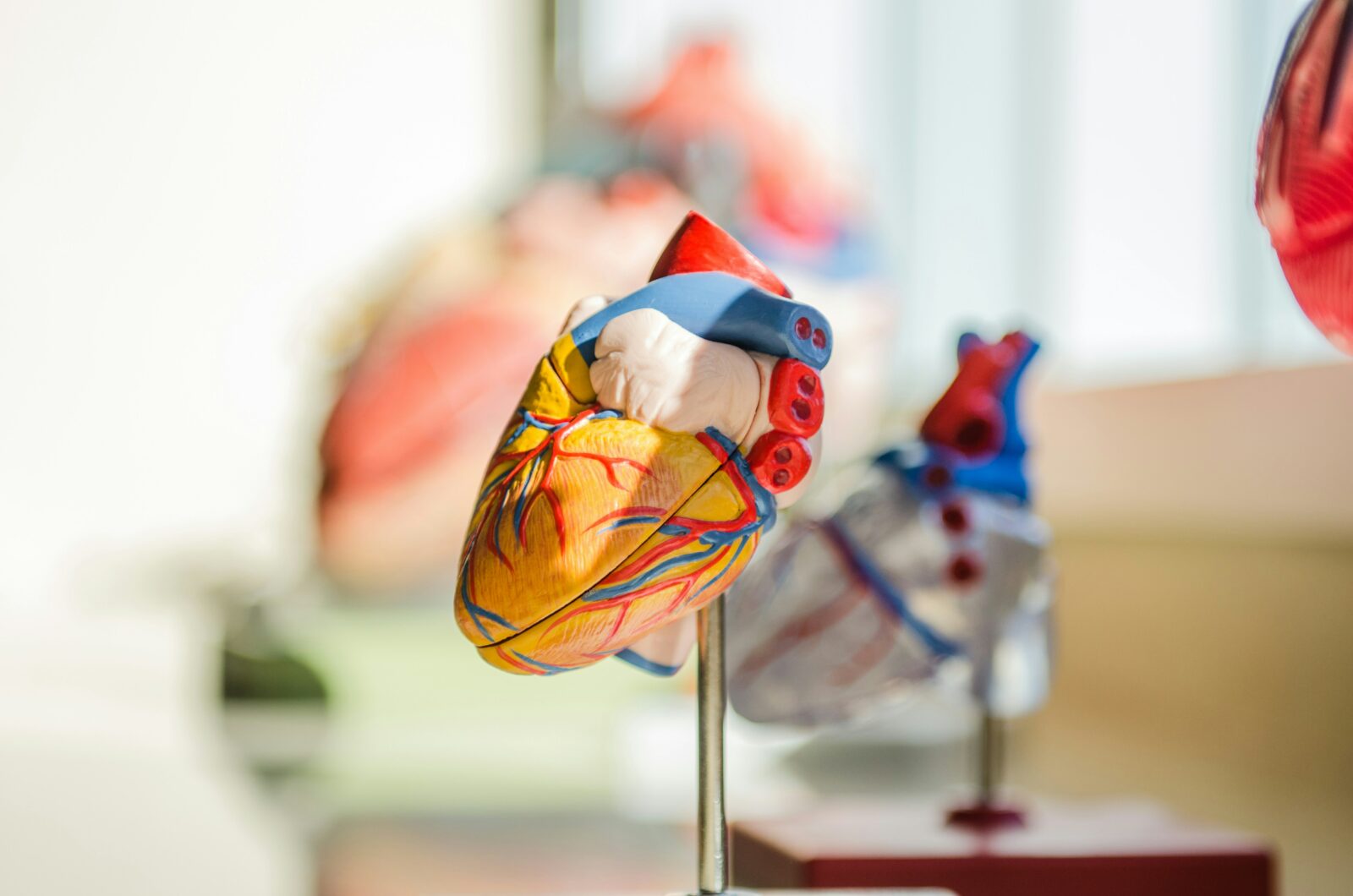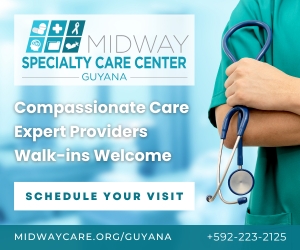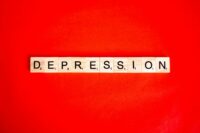Coronary artery disease (CAD) occurs when excess cholesterol builds up in the arteries of the heart forming plaques which can cause narrowing of the arteries over time reducing blood flow to the heart muscle. These plaques are prone to rupture and can cause a heart attack. It affects 250 million people worldwide and is the most common cause of premature death worldwide and in Guyana. It would be safe to say everyone has a family member or knows someone close to them who has been affected by CAD as such knowing about CAD becomes essential.
Who is at risk of developing CAD?
Risk factors that lead to excess cholesterol in the blood that can lead to CAD can be referred to as non-modifiable and modifiable.
- Non-modifiable risk factors are those you have no control over.
- Modifiable risk factors are those you can change or control.
Non-Modifiable Risk Factors
- Ethnicity (higher in certain population such as South Asians (East Indian)
- Advancing age
- Males
- Positive family history of heart disease or elevated cholesterol
Modifiable Risk Factors
- Hypertension
- High cholesterol
- Diabetes Mellitus
- Obesity
- Sedentary lifestyle
- Unhealthy diet
- Stress
- Excess alcohol intake
- Smoking
- And other factors
What happens when you have CAD?
Patients with CAD can develop symptoms dependent on the severity of the blockage as follows:
- Blockages that are < 70% usually do not have symptoms.
- Blockages > 70% can cause angina which is chest pain with physical activity that is relieved with rest. For example, chest discomfort occurs with climbing a flight of stairs and is relieved with rest.
What is a heart attack?
This occurs when a plaque in one of the coronary arteries ruptures leading to a blood clot that blocks blood flow to the heart muscle resulting in the heart muscle dying which can either result in the person dying or suffering significant heart damage leading to heart failure (weakened heart) if not treated early.
What are the symptoms of a heart attack?
- The most common symptom of a heart attack is chest pain or discomfort in the center of the chest which can feel like a heaviness that last for more than 15 minutes. Sometimes, it can move up to the neck and down the left arm.
- Individuals can also feel a burning sensation in the chest that is persistent despite using antacids. Many mistake this as heart burn and do not seek medical attention early.
- Patients can also experience shortness of breath, sweating, nausea, and vomiting. Individuals who have diabetes, are in older age and are women may present with these symptoms instead of chest pain.
What should you do if you suspect a heart attack?
- Call the EMS or an ambulance service to take you to an emergency department or go to the closest emergency room as soon as possible.
- An electrocardiogram (ECG) and blood test would be done to diagnose if you are having a heart attack.
What is the treatment of a heart attack?
- Individuals with a heart attack (100% blockage) would need an urgent life-saving procedure to identify the blockage called an angiogram and then a procedure to open the blockage with a balloon and stent called angioplasty.
- If angioplasty is not available then they can receive a clot busting medication (thrombolytic therapy) to dissolve the clot. An angioplasty is still needed if the vessel remains blocked.- The earlier you present to hospital and the artery is opened the less likely you are to die or suffer complications.
- In a study done in Guyana we have found almost 80% of individuals present late (> 12 hours) from onset of chest pain.
What can I do to prevent CAD?
The American Heart Association has recommended an ABCDE approach as follows:
A. Awareness
You need to become more aware of whether you or your family members have symptoms or risk factors of CAD and see a physician for further evaluation.
B. B Values
Know your B values: blood pressure, blood sugar and body mass index.
Blood Pressure (BP)
Individuals 18-39 years with low-risk should check BP every 2-5 years and those over 40 years checked yearly. Adults with risk factors should have BP checked yearly regardless of age. It should be less than 120/80 mmHg. If you have hyper tension as shown below you would need to be seen by a physician.
| Blood Pressure | Diagnosis |
| <120 / 80 | Normal |
| 120-130 / <80 | Elevated |
| >130-139 / 80-89 | Stage 1 Hypertension |
| >140 / >90 | Stage 2 Hypertension |
Blood Sugar
The American Diabetes Association recommends screening for all individuals 35 years and older and all adults who are overweight or obese with one risk factor for diabetes. This can be done by doing a fasting blood sugar test (FBS), a random blood sugar (RBS) or an HBA1C test. Those diagnosed with prediabetes or diabetes would need to see a physician for treatment.
| Diagnosis | FBS | RBS mg/dl | HBA1C |
| Normal | 80-100 mg/dl | <140 mg/dl | 4.5-5.6% |
| Prediabetes | 101-125 mg/dl | 140-199 mg/dl | 5.7-6.4% |
| Diabetes | >126 mg/dl | >200 mg/dl | >6.5% |
Body Mass Index (BMI)
Body mass index is a tool used to diagnose whether you are overweight or obese using your height and weight which can be done using an online calculator. If you are overweight or obese you would need to take action to get your weight under control by diet and exercise first, then seeking medical attention for other therapies.
| Categories | BMI |
| Underweight | <18.5 |
| Healthy weight | 18.5 to 24.9 |
| Overweight | 25 to 29.9 |
| Obesity | >30 |
C. Cholesterol: Know your levels
Adults should have a fasting lipid profile done at least once per year which consists of a total cholesterol, LDL (bad cholesterol), HDL (good cholesterol) and triglycerides. An elevated LDL is associated with increased risk of CAD. These individuals can benefit from statins which reduce the LDL levels and stabilize plaques reducing your risk of developing a heart attack.
| Levels | Low Risk | Borderline Risk | High Risk |
| Total Cholesterol (mg/dl) | <200 | 200-239 | >240 |
| LDL (mg/dl) | <130 | 130-159 | >160 |
| HDL (mg/dl) | >60 | 50-59 | <50 |
| Triglycerides (mg/dl) | <150 | 150-199 | >200 |
Cigarette smoking: Quit at all costs
People who smoke have a very high risk for CAD as elements contained within the cigarette contribute to plaque build-up. There are several ways to quit smoking and if help is needed there are local programs available, or you can discuss your options with a physician.
D. Diet: Eat healthier live longer
Diet plays an important role in preventing CAD and we need to recognize whatever we put into our bodies can significantly affect our overall health.

Emphasize
- Fruits and vegetables
- Whole grain foods
- Healthy sources of proteins: fish and seafood, legumes and nuts, low-fat / fat-free dairy, poultry and if desired lean meat.
- Liguid plant oil (eg, soybean oil and canola oil)
Minimize
- Beverages and food with added sugars
- Ultra-processed food
- Processed meats
- Food High in salt
- Alcoholic beverages
- Tropic oils
E. Exercise: Get moving
It is recommended to do 30 minutes of moderate physical activity 5 times weekly. Exercising regularly can be a challenge for most due to work schedules so it is recommended to schedule regular exercise, do something you enjoy such as playing a sport and involve others to keep you motivated. If you have not been exercising regularly then just start walking for 10 to 15 minutes per day and gradually increase your activity.
More and more I see younger individuals in their 30s and 40s presenting with a heart attack with some presenting late and now having heart failure or dying. These individuals have young families, and their lives are disrupted. I strongly recommend you act now, get screened for risk factors for CAD and learn more on adopting a heart healthy lifestyle as the life you save could be your own or a loved one.














